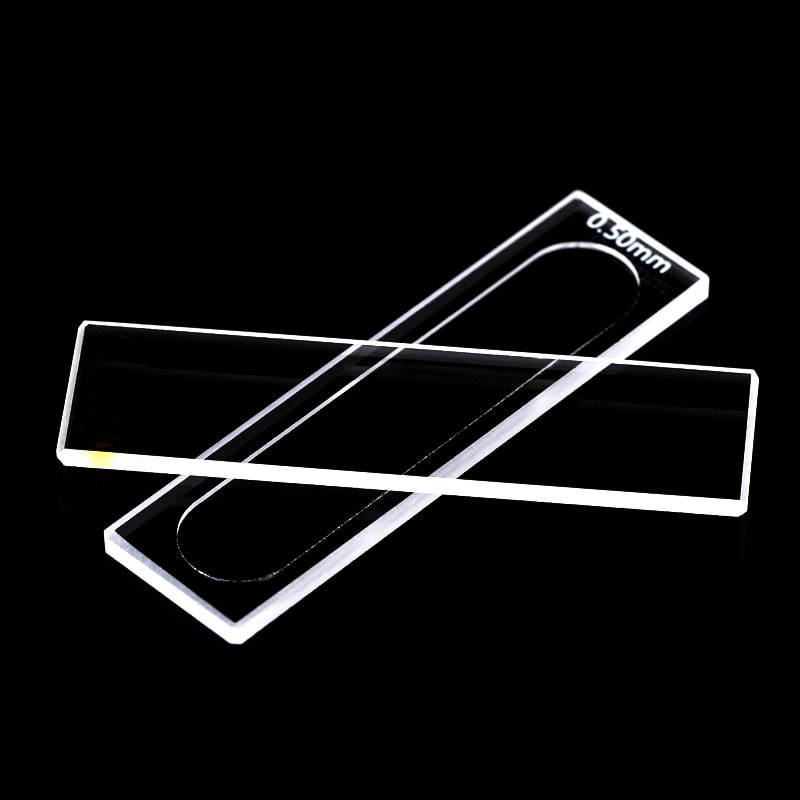Spectrophotometry, which uncovers the secrets behind light transmittance and absorption at specific wavelengths, is an important method for scientific discovery. At its heart lies the cuvette which is a modest but vital vessel that houses samples for analysis. They may seem basic, but their specifics, from cuvette length and material selection provide the key to obtaining accurate information on the concentration of substances and their purity. Explore this fascinating realm of cuvettes and their dimensions. They affect the results of every experiment.
Power of Cuvette Path length
Imagine a beam of light passing through an object. The outcome is determined by the length of the path that is taken by the cuvette. This is the length light travels in the liquid. A standard 1cm path length cuvette is typically the go-to for many labs, finding a compromise between sensitivity and practicality. What is the significance of this? The longer the distance, the more light is absorbed and amplifies the signal in less concentrated samples. For concentrated solutions, such as proteins or nucleic acids a shorter path length can be a game-changer. It can reduce the requirement to dilute, which is great for conserving valuable samples, and cutting down on preparation time. What’s the main takeaway from this? The art of matching the length of the path to demands for the sample is a delicate technique that improves reliability.

Image credit: cuvet.co
Cuvette Dimensions and Size More Than What Meets the Eye
It’s not just about the amount of liquid you can fit in the vessel, it’s equally about how the vessel interacts the spectrophotometer. These containers come in a variety of volumes and shapes and are each designed to meet specific job. Semi-micro cuvettes, for example are smaller in size and thicker wall thicknesses are made to hold tiny amounts of sample. Think about a couple of nanoliters or an uncommon biological extraction. Thicker walls shrink the interior space, which allows light to flow through a condensed sample without loss of any drop. This is a significant improvement over a standard cuvette. It takes less steps to pipette, offers less room for error and gives results that are stable. This is an innovative tweak that shows size isn’t just an arbitrary number, but an important factor to consider.
The 1 cm path length Cuvette is a laboratory favorite
What is the reason why the cuvette’s 1 cm length is so widely used in experiments? It is ideal for biological tests when the samples are in short supply and milliliters count. This standard design gives regular absorbance readings, without overloading the detector. This makes it suitable for everything from DNA purity tests to enzyme assays. This is not a hero in all circumstances. If you switch it out to a cuvette with a different geometry or path length, like the one used in emission studies, the results can be very different. It is important to choose the right tool, and not just the one you feel comfortable with. A wrong cuvette can be compared to a poorly tuned instrument.
Material Matters: Beyond Path and Size
Cuvette dimensions tell only half the story material choice seals the deal. Glass and quartz cuvettes are well-known for their exceptional light transmission rates. They are durable and reusable. This makes them perfect for spectroscopy. On the other hand plastic cuvettes can be found in a variety of sizes, offering affordability and ease of use. You can use them and then throw them away. There’s no need to wash or clean up after, and no risk of cross-contamination. They’re perfect for quick DNA and test for RNA as well as aqueous solution. What’s the trade-off? The trade-off? Quartz is the most preferred material for purists. Plastic is the material of choice for the sensible.
Perfect Practice and Precision
Cuvettes’ appeal lies in their adaptability. The short path length options with spacers handle concentrated samples with precision, while larger vessels can handle bigger quantities. Each choice of path size and length and the kind of material will have an effect on the study. This may impact the quality of the results. Imagine a laboratory measuring a rare protein: A semi-micro cuvette with an elongated path avoids diluting issues and provides reliable data fast. Compare that to a careless swap of cuvettes in the middle of an experiment and you’ll notice that the numbers drop. The smallest details have the greatest impact on the field of spectrophotometry.
Cuvettes are small but they play an important role. They are available in a variety of sizes including the cuvette that has a 1 cm length path to those made to order. They are able to bridge the gap between data and insight. The right cuvette could transform an excellent measurement, regardless of regardless of whether you’re seeking concentration or purity and precision, into a fantastic measurement.